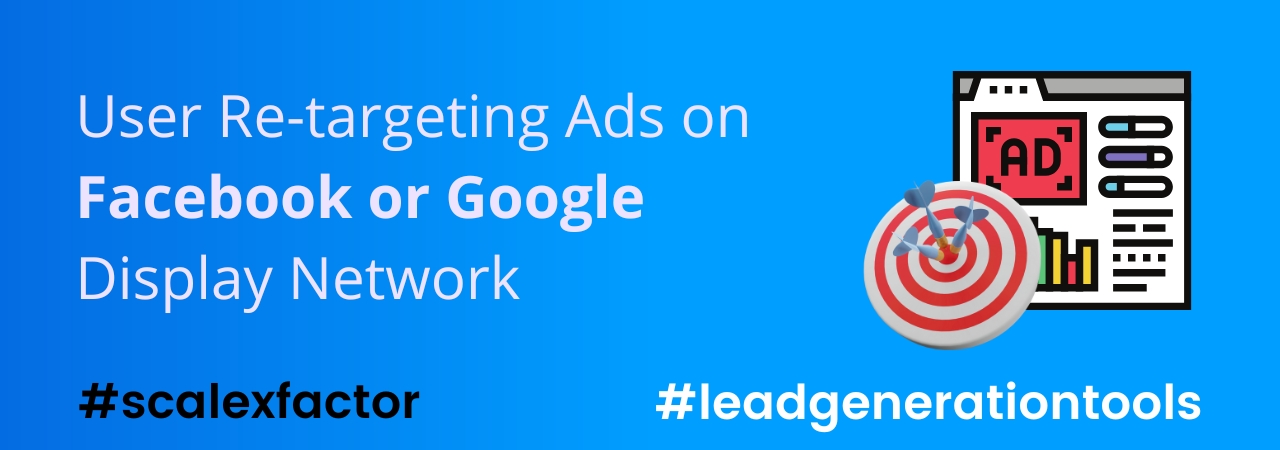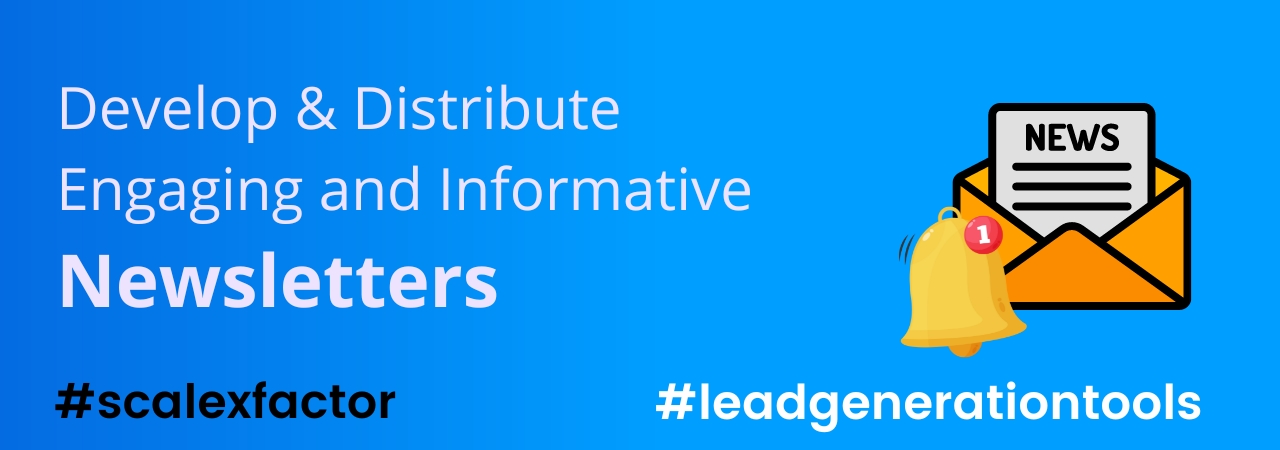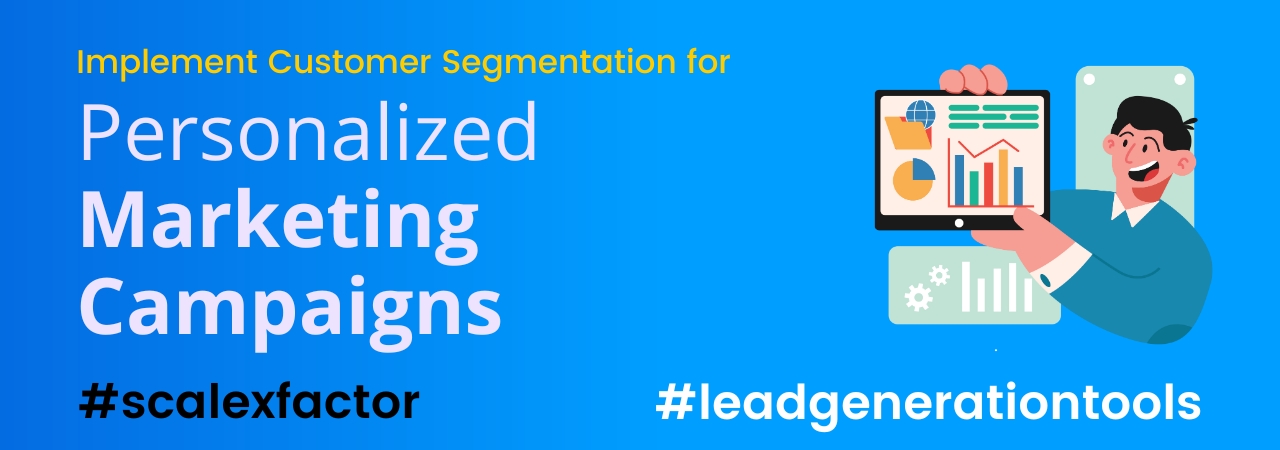Welcome to the 22nd part of our exciting journey through “101 Ways of Lead Generation – Tools in Modern Marketing.” In this chapter, we’ll delve into some powerful strategies that can transform your marketing game and take it to soaring heights!

Ever wondered how businesses manage to bring you back to their websites or products after you’ve shown a hint of interest? We’ll uncover the magic behind user re-targeting ads on Facebook and the Google Display Network (Point 64). You’ll be amazed at how these ads work their charm!
But that’s not all! If you’re eager to captivate your audience and build lasting relationships, Point 65 will be music to your ears. We’ll show you the art of developing and distributing engaging and informative newsletters that keep your readers hooked!
And if you’re all about making your customers feel extra special, you’ll love Point 66. Get ready to explore the world of customer segmentation, where personalized marketing campaigns make your audience feel like they’re being spoken to directly!
So, buckle up, and let’s embark on this knowledge-packed ride together. Get ready to revolutionize your lead generation strategies and achieve marketing greatness! Let’s dive in!
64. User Re-targeting Ads on Facebook or Google Display Network
Hey there! Let me tell you about the magic of user re-targeting ads on Facebook and the Google Display Network. Have you ever noticed ads following you around the internet after visiting a website? That’s re-targeting in action!

User re-targeting ads are a powerful marketing technique that allows businesses to re-engage with potential customers who have shown interest in their products or services. When someone visits a website, a small piece of code (a cookie) gets placed on their browser. This cookie helps track their online behavior, such as the pages they visited and products they viewed. Later, when the user goes back to Facebook or browses other websites within the Google Display Network, the platform recognizes the cookie and displays relevant ads from the website they previously visited.
Pros:
- Increased Conversion Rates: Re-targeting reminds users of products they were interested in, increasing the chances of conversion.
- Better ROI: Re-targeting focuses on warm leads, ensuring your ad spend is more effective.
- Personalization: Tailoring ads based on user behavior enhances the overall customer experience.
- Brand Awareness: Constant exposure to ads reinforces brand recall and trust.
- Flexible Campaigns: You can set various triggers for re-targeting, like cart abandonment or specific page visits.
Cons:
- Ad Fatigue: Overexposure to re-targeting ads may annoy some users.
- Privacy Concerns: Users might feel uneasy about being tracked across the web.
- Limited Reach: Re-targeting only targets previous website visitors, missing out on new potential customers.
- Cookie Deletion: Some users regularly clear their cookies, making re-targeting ineffective.
- Costs: Depending on your industry, re-targeting ads may have high click costs.
FAQs:
- How does re-targeting work? Re-targeting uses cookies to track user behavior and show relevant ads when they visit other platforms.
- Is re-targeting legal? Yes, as long as you comply with privacy regulations and provide proper disclosures in your privacy policy.
- Can I re-target on other platforms besides Facebook and Google? Yes, many advertising platforms offer re-targeting options, like LinkedIn and Twitter.
- What’s the best time to start re-targeting campaigns? Begin re-targeting once you have a decent number of website visitors to create meaningful audience segments.
- Can I control how often users see re-targeting ads? Yes, you can set frequency caps to limit ad exposure for each user.
65. Develop and Distribute Engaging and Informative Newsletters
Hey, newsletter aficionado! Let’s dive into the wonderful world of engaging and informative newsletters that captivate readers and drive leads.

Newsletters are an email marketing gem. They provide a direct line of communication with your audience and keep them informed about your latest offerings, industry insights, and exciting updates. Engaging newsletters are those that are well-designed, visually appealing, and contain valuable content that your subscribers can’t resist reading.
Pros:
- Builds Relationships: Newsletters help foster a sense of community and trust between your brand and subscribers.
- Showcases Expertise: Share valuable insights and establish your brand as an authority in the industry.
- Drives Traffic: Include links to your website or blog to increase traffic and boost SEO.
- Encourages Conversions: Newsletters can include exclusive offers, leading to more conversions.
- Cost-Effective: Email marketing is one of the most cost-efficient marketing strategies.
Cons:
- Email Overload: Subscribers may already receive many newsletters, increasing the chances of yours being overlooked.
- Content Quality: Poorly written or uninteresting content can lead to subscribers opting out.
- Compliance Challenges: Ensure compliance with email marketing regulations, like GDPR and CAN-SPAM.
- Design Issues: Inadequate email design can make your newsletter appear unappealing.
- List Management: Managing subscriber lists and segmenting them properly can be time-consuming.
FAQs:
- How often should I send newsletters? It depends on your audience and content availability, but a monthly or bi-weekly schedule is common.
- What content should I include in my newsletters? Engaging content includes industry news, tips, product updates, and exclusive offers.
- How can I grow my newsletter subscribers? Offer incentives like free resources or discounts for signing up and promote your newsletter on social media and your website.
- Can I personalize newsletters for different segments? Yes, use customer segmentation to tailor content based on subscribers’ interests and behaviors.
- What’s the best email marketing tool for newsletters? There are many excellent tools like Mailchimp, ConvertKit, ScaleXFactor and Constant Contact; choose one that suits your needs and budget.
66. Implement Customer Segmentation for Personalized Marketing Campaigns
Hello marketing maestro! Customer segmentation is like a secret sauce for personalized marketing campaigns. Let’s unlock the power of segmentation together!

Customer segmentation involves dividing your audience into distinct groups based on shared characteristics like demographics, behavior, or preferences. By understanding your customers’ unique traits, you can craft targeted and personalized marketing campaigns that resonate with each segment, boosting engagement and conversion rates.
Pros:
- Relevance: Personalized campaigns are more relevant, leading to increased customer interest.
- Improved Engagement: Segmented campaigns speak directly to customers’ needs, encouraging interaction.
- Higher Conversions: Relevant offers and content increase the likelihood of conversion.
- Customer Loyalty: Tailored experiences foster a sense of loyalty and connection to your brand.
- Better ROI: Targeted marketing reduces ad waste and maximizes your marketing budget’s impact.
Cons:
- Complexity: Creating and managing various segments can be time-consuming and challenging.
- Data Requirements: Effective segmentation relies on sufficient and accurate customer data.
- Overlap: Some customers may fit into multiple segments, leading to duplicated marketing efforts.
- Limited Reach: Over-segmentation can narrow your audience, limiting potential reach.
- Dynamic Nature: Customer preferences change, requiring regular updates to segmentation strategies.
FAQs:
- How do I segment my customer base? Segment by demographics, behavior (purchase history, website visits), or psychographics (interests, values).
- How many segments should I create? It depends on your business and available data, but start with a few key segments and expand as needed.
- Can I use customer segmentation for email marketing only? No, you can apply segmentation to various marketing channels, like social media and personalized ads.
- Is customer segmentation suitable for small businesses? Absolutely! Even small businesses can benefit from understanding and targeting their audience better.
- How often should I review and update segments? Regularly monitor customer data and update segments whenever significant changes occur in behavior or preferences.
Remember, the key to successful lead generation is to know your audience inside out and craft content and campaigns that genuinely resonate with them. Now go forth and conquer the marketing world with these powerful strategies!




